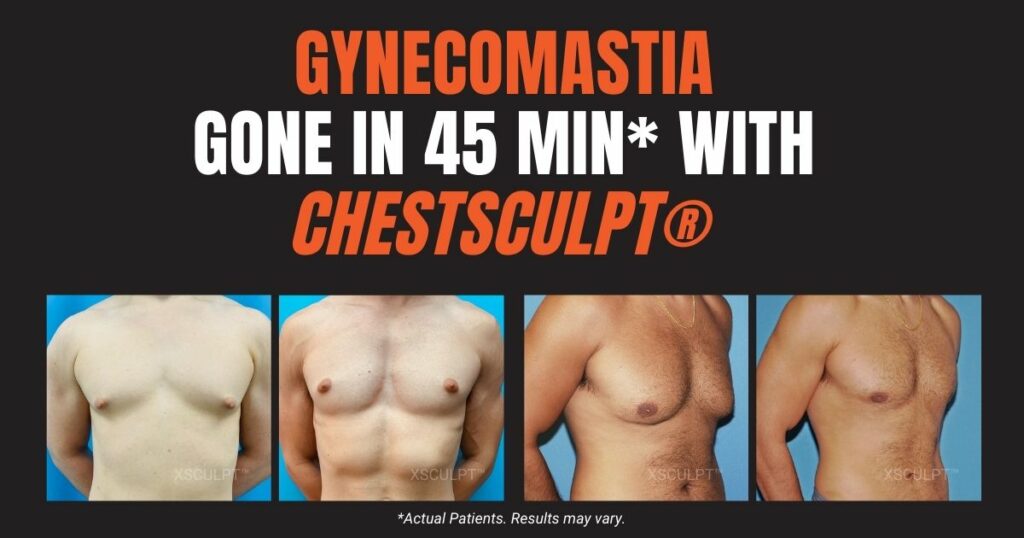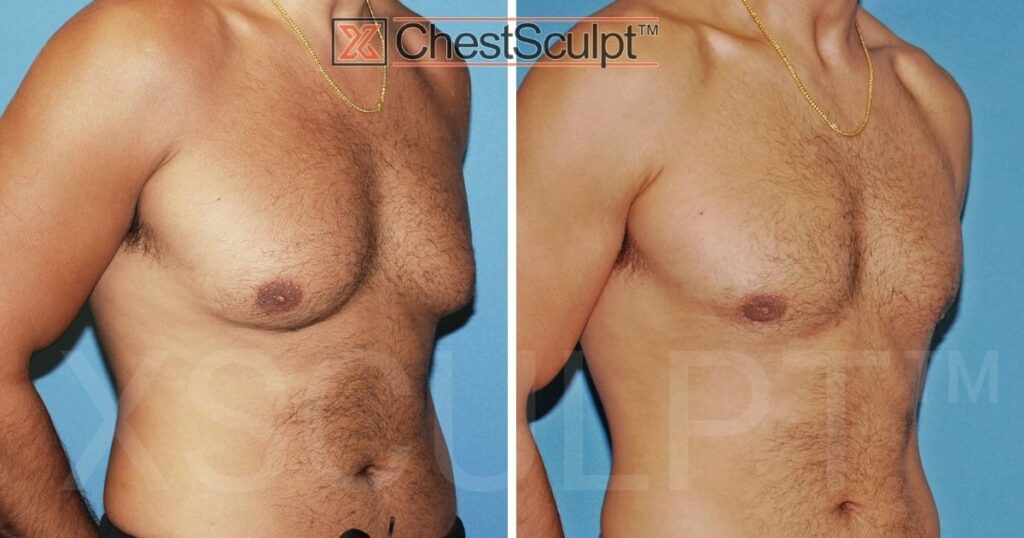What Is Male Breast Reduction?
Male breast reduction, also commonly known as “gynecomastia surgery“, is a specialized cosmetic surgery performed to address gynecomastia – the presence of abnormal breast tissue on the male chest. This procedure is designed to remove fatty deposits that obscure the masculine chest lines, sometimes involving liposuction. In cases where glandular breast tissue is also present, surgical excision may be necessary. When a significant amount of fatty tissue is removed, excess skin might also need to be trimmed to achieve the desired contour.
Gynecomastia presents in two forms: true gynecomastia and pseudogynecomastia.
True Gynecomastia: This condition is characterized by the enlargement of glandular breast tissue in men, giving the chest a softer and fuller appearance akin to female breasts. It’s often linked to hormonal imbalances and can occur at any age due to various factors, including medication or recreational drug use.

Pseudo Gynecomastia: This form involves the accumulation of fatty deposits in the upper chest without excess glandular tissue. Lifestyle changes like weight loss and exercise can reduce these fatty deposits, but they may not fully resolve gynecomastia symptoms.
At Xsculpt, most male breast reduction surgeries are performed to address true gynecomastia. However, surgical treatment for both types aims to deliver long-lasting results. Notably, weight gain can lead to the recurrence of fat deposits in the chest.

Choosing Your Surgeon and Procedure
The decision to undergo male breast reduction should be carefully considered, and the choice of surgeon is critical. A consultation with a skilled cosmetic surgeon in Chicago can provide insights into gynecomastia and the most appropriate treatment options. During your consultation, expect to learn about:
Step 1 – Anesthesia: Options include general anesthesia, where you’ll be asleep, or local anesthesia with sedation. Ensure your surgeon has privileges at an accredited facility for the recommended anesthesia type.
Step 2 – Incision Placement & Surgical Technique: The technique depends on the type of gynecomastia. Pseudo gynecomastia may require only liposuction, involving small incisions for fat removal. True gynecomastia needs a more comprehensive approach, potentially including incisions around the areola or under the chest muscles.
Step 3 – Male Breast Reduction Procedure Steps: The procedure begins with anesthesia, followed by fat removal via liposuction and/or glandular tissue excision. Excess skin may be removed, and the areola or male nipple may be resized if necessary.
Step 4 – Set Your Date And Prepare For Recovery: Plan your surgery and recovery time, considering any additional tests or lab work required. Maintain realistic expectations and prioritize health before and after the procedure.

Educate Yourself and Stay Informed
Understanding gynecomastia and the male breast reduction process is crucial. The right surgeon in Chicago will provide detailed information and ensure you feel confident about your decision. Remember, male breast reduction is generally straightforward, with high satisfaction rates and low risks of complications.
For more on planning for your surgery read our gynecomastia surgery guide.
What Is Gynecomastia? ↗
An in-depth guide to gynecomastia causes, symptoms and treatment options.
45-minute gynecomastia treatment ChestSculpt® exclusively at XSculpt™
How Much Does Gynecomastia Surgery Cost? ↗
Learn more about pricing for gynecomastia treatment.
Gynecomastia Before & After Gallery ↗
See before and after photos of gynecomastia patients.

GET YOUR COMPLIMENTARY ANALYSIS AND CONSULTATION TODAY
XSCULPT was founded by two award-winning board-certified surgeons Dr. Marc Adajar & Dr. Anh-Tuan Truong. Our practice specializes in body contouring procedures, including Gynecomastia (Male Breast Reduction), Abdominal Etching, Lipo 360, Vaser Hi Definition Liposuction, Male Puffy Nipple Reduction, Male Tummy Tuck, and Non-Surgical Fat Reduction. Medical services include Hormone & Testosterone Replacement Therapy, Anti-Aging, Peptide Therapy and Medical Weight Loss.


